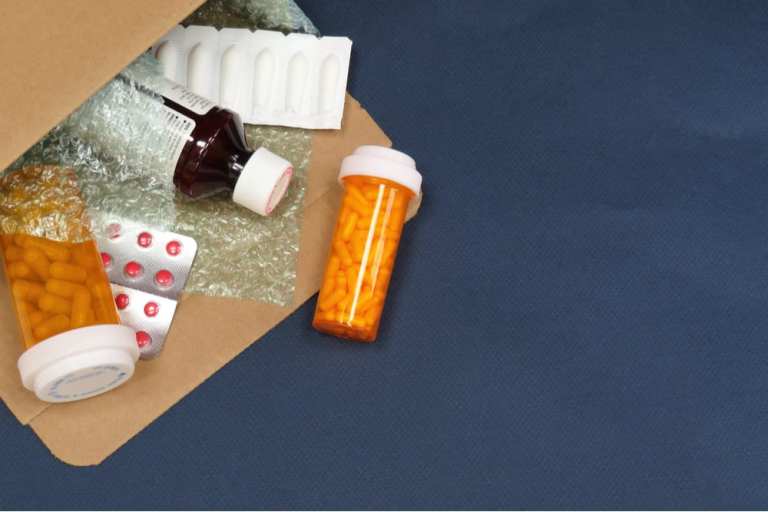Uber Health’s Push To Close Prescription Deliveries Last Mile

Uber Health made big news this past week with the announcement that it was scaling up its delivery services to include pharmaceutical products in some locales.
That’s a major new add-on for Uber Health, which the ride-hailing firm launched in 2018 to provide patients with transportation to and from medical appointments.
“With COVID-19 cases still on the rise across the U.S., getting to a pharmacy to pick up prescriptions can be challenging for many and nearly impossible for some,” Uber said in announcing the program’s launch in Dallas and Seattle to start.
Uber is entering prescription delivery in partnership with NimbleRx, a medical delivery firm founded to offer patients a safe and efficient mechanism for accessing their medications. NimbleRx CEO Talha Sattar noted in Uber’s announcement that demand for the company’s service has been on the rise in the COVID-19 era from both patients and retail pharmacies looking for delivery solutions.
“Through this partnership with Uber Health, we are able to dramatically increase the availability of on-demand delivery of an essential product like prescriptions, which is leading to a further increase in demand in all markets we are already active in,” Sattar said.
The announcement represents the latest push into delivery services for Uber, which saw demand for its core ridesharing services plummet 73 percent during the second quarter. And while that has started to show some signs of recovery in Q3, the standout for Uber has been its delivery services business — particularly Uber Eats, which saw revenues soar 113 percent in Q2 to $6.96 billion.
“It’s become clear that we have a hugely valuable hedge across our two core businesses that is a critical advantage in any recovery scenario,” Uber CEO Dara Khosrowshahi told analysts during the company’s latest earnings call. “When travel restrictions lift, we know the mobility trips rebound. If restrictions continue or need to be re-imposed, our delivery business will compensate.”
That Uber is looking to further expand that delivery business makes sense, as the firm is attempting to nurture delivery to be co-equal to ridesharing. Apart from its partnership with NimbleRx to expand into prescription delivery, Uber also recently launched Uber Connect — a service that allows users to send small packages via UberX drivers to local destinations.
Uber’s jump into the prescription delivery market also coincides with rising demand among consumers for such services — and a slew of recent reports about “last-mile blues” within the segment as a result of U.S. Postal Service slowdowns.
Meeting Rising Consumer Demand
As NowRX Co-Founder and CEO Cary Breese recently told PYMNTS CEO Karen Webster, consumers want online delivery options for their prescriptions, but pharmacies haven’t historically been excited to offer that up. That’s because many rely on drawing customers into the store to make other purchases while picking up medicines.
“It’s core to their profitability, [but] I think they’re misaligned,” he said. “It’s a destination model, and that’s counter to the way customers are trending [in] a post-pandemic world.”
Instead, the desire for pharmaceutical delivery is pushing consumers toward a growing host of well-financed direct-to-consumer (DTC) prescription drug players, like Truepill, ePharmacy Ro and Amazon-owned PillPack. There are also sites that sell specific products online, like Zero (nicotine addiction), Roman (men’s health and erectile-dysfunction treatments) and Rory (women’s health), to name a few.
What consumers are increasingly seeing amid their expanded use of telehealth services is they don’t have to go through a multistep process that involves various trips to several locations spread across hours to see doctors and get prescriptions.
Breese said that’s bound to change as firms like Amazon and NowRx leverage digital services and automation to break the “bottlenecks” that have created a process no one likes. Instead, Breese foresees a system where prescriptions are automatically processed and speedily delivered to patients.
“I am seeing more activity currently on the health systems that are saying, ‘We want to control this whole process. We [want] telehealth. We want to own the pharmacy,’” Breese said. “I think a lot of the pharmacy industry’s going to move away from independence into a health system-based, fully integrated model that’s been built specifically around a remote telehealth environment.”
Solving The Last-Mile Problem
However, the recent battle brewing on Capitol Hill over problems at the U.S. Postal Service has left some patients in limbo as they face delivery delays on mail-order prescriptions.
Nathan Geissel, who lives in rural Oregon, recently told CNBC that he has prescriptions delivered for convenience (the nearest pharmacy is 20 minutes away) and because his insurance charges a lower copay when he gets medications delivered. But he recently faced a nine-day delay waiting for his meds to arrive.
“Thankfully, a local pharmacist approved two more weeks of medication with my health plan that I could pick up as an emergency,” Geissel told the network. “I work in healthcare, so I know the system, but I can’t imagine what it must be like for an elderly patient who doesn’t have that same access.”
TruePill’s founder, Umar Afridi, told CNBC that about 90 percent of prescription drugs his company delivers run through the Postal Service because it’s “the lowest cost, and they have the biggest reach.” He said the company only sends its more urgent or expensive orders via FedEx or UPS.
That makes Uber’s admittedly limited entry into the market an interesting move that seems aimed to serve two needs emerging in the prescription-delivery system.
The first is to make more delivery options, along with remote ordering to the growing number of consumers looking for it. The second need is to close the “last-mile” gap — to make sure medication that’s needed doesn’t end up getting lost in the mail.